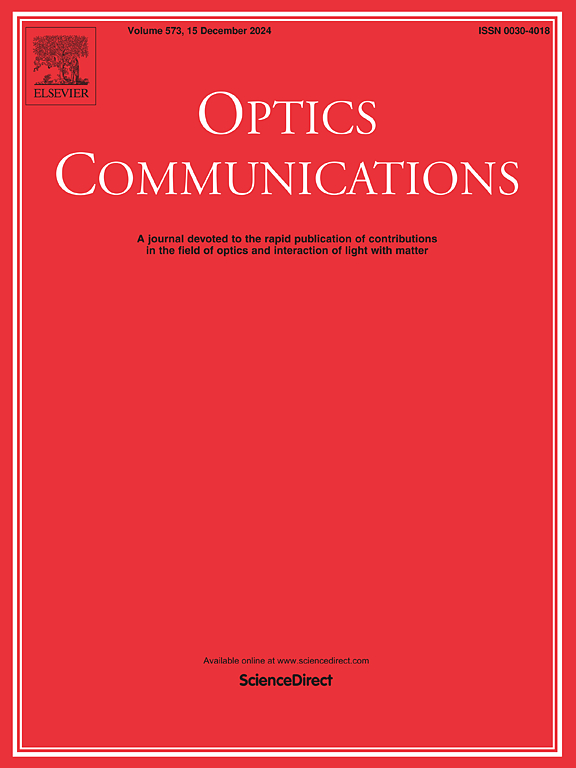A high-sensitivity curvature mini-two-path MZI fiber sensor based on a four-core fiber
IF 2.2
3区 物理与天体物理
Q2 OPTICS
引用次数: 0
Abstract
We propose and demonstrate a high curvature sensitivity fiber sensor with a mini-two-path Mach-Zehnder interferometer (MTP-MZI) structure based on four-core fiber (FCF). A simple arc discharge technology is used to fabricate the MTP-MZI, where the sensing path is an in-line MZI (IMZI) structure that directly sandwiched the FCF between two sections of coreless fiber (CLF), and the reference path is a single-mode fiber (SMF) only. When the curvature changes from 0 m−1 to 0.101045 m-1, the IMZI sensor has a maximum curvature sensitivity of 57.29 dB/m−1, while the MTP-MZI sensor has a sensitivity of 108.29 dB/m−1, the curvature sensitivity has been improved by 1.89 times, which is the highest intensity-modulated curvature sensitivity based on multi-core fiber, to the best of our knowledge. The comparable experiment illustrated that the MTP-MZI structure can effectively enhance the sensor's sensitivity and provide an effective method to prepare a good-performance sensor with low-cost, miniaturized, and simple requirement technology.
求助全文
约1分钟内获得全文
求助全文
来源期刊

Optics Communications
物理-光学
CiteScore
5.10
自引率
8.30%
发文量
681
审稿时长
38 days
期刊介绍:
Optics Communications invites original and timely contributions containing new results in various fields of optics and photonics. The journal considers theoretical and experimental research in areas ranging from the fundamental properties of light to technological applications. Topics covered include classical and quantum optics, optical physics and light-matter interactions, lasers, imaging, guided-wave optics and optical information processing. Manuscripts should offer clear evidence of novelty and significance. Papers concentrating on mathematical and computational issues, with limited connection to optics, are not suitable for publication in the Journal. Similarly, small technical advances, or papers concerned only with engineering applications or issues of materials science fall outside the journal scope.
 求助内容:
求助内容: 应助结果提醒方式:
应助结果提醒方式:


